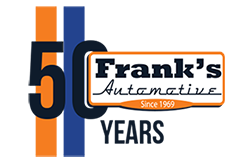-
A Notice about COVID-19
Dear Clients and Friends,
We are all aware and concerned about Covid-19 the Coronavirus. We put the well being of our employees and clients at the top of our priorities. We ask our clients to use the guidelines set forth by the CDC and our local government. Stay in place if you or someone in your household is not feeling well and limit travel. We have asked our employees to do the same.
We understand that is a very fluid situation. Guidelines and recommendations
change on a daily basis. With that being said, we have decided to remain open until further notice. Vehicles are an important part of our daily routine. Even during times like these, the need to get to the store or doctor appointments requires you to make sure your car is in proper working order. If clients are concerned about getting a vehicle to us we can try to make arrangements. We will still offer Uber and Lyft rides as per clients’ needs. Feel free to call us to schedule an appointment or help you answer any questions you may have.We have always operated making sure your vehicle remains clean. We do so by using steering wheel covers, seat covers, and gloves while working on your cars. These same measures will help protect you and our employees. We will continue these practices and wipe down any other surfaces as necessary. We have located outside our office, a hand sanitizing station. It has been there for over a year. At the time it seemed to be excessive, now that it is in place we use it and ask you to do the same. We also wipe down counter surfaces and door handles multiple times a day. Cleaning and sanitizing are the best way to fight this illness along with social distancing.
Many of our clients are doctors, nurses, and first responders. Thank You for being on the frontline of this trying time. We appreciate the sacrifices you are making. We hope this all comes to an end soon. So we all can return to our normal daily routines.
Thank you for your understanding.
Nick Lettini and The Staff at Frank’s Automotive -
Having Transmission Problems in Neutral?
While certain transmission problems will reveal themselves as you are driving down the road, others may only appear when your vehicle is in neutral. If your vehicle emits a strange bumping or clunking sound when it is in neutral, this is a signal that you need to schedule immediate transmission services in Sacramento . A technician that offers professional transmission repairs will know precisely how to fix your car’s transmission problem.
Transmission issues that arise in neutral can be caused by a few common maintenance problems. One of the most common reasons for bumps and bangs in a natural position is low transmission fluid. If you have been neglecting a transmission fluid flush, ask your mechanic to check and refill your transmission’s fluid reservoir. If replacing your transmission fluid does not remedy the issue, you may need mechanical repairs for your vehicle. Neglecting to replace worn-out bearings or damaged gears could ultimately cause your transmission to fail completely.
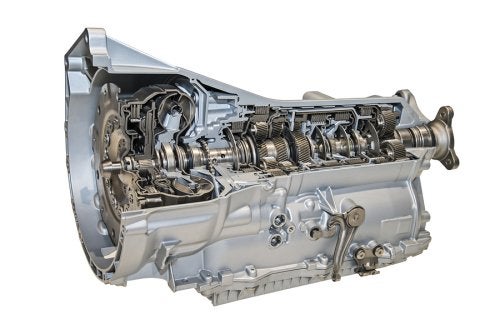
-
Top Signs of a Failing Transmission Position Sensor
Your car’s transmission contains many sophisticated parts that must work in synchronicity to power your vehicle forwards. When your vehicle starts to experience transmission problems, the issue could be the result of a failing transmission position sensor. Using specialized diagnostic tools, a transmission repair specialist in Sacramento can pinpoint the source of your vehicle’s transmission problems. To help you figure out what is going wrong with your transmission system, here is a look at the common signs of a failing transmission position sensor.
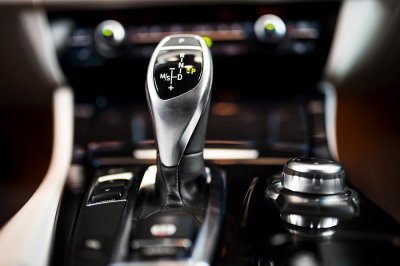
Car fails to move out of park.
When your vehicle is unable to shift out of neutral or park, this is a clear indication that there is a serious problem somewhere in the transition system. A failing transmission position sensor may no longer send the right signals to the Powertrain Control Module, or PCM. Without signals from the position sensor, the PCM will no longer know when to shift the transmission’s gears out of park into a moving gear.
Transmission shifts into the wrong gear.
The transmission position sensor and PCM work together to allow the automatic transmission to choose the right gear for various speeds of travel and driving conditions. When your transmission shifts into the wrong gear, you may notice that your engine seems to stall out or rev unexpectedly. If your transmission is continually mismatching its gear selection and gear ratios, you may want to ask your mechanic to check on the condition of your transmission position sensor.
Vehicle becomes locked in a single gear.
Many modern vehicles are equipped with failsafe devices, which prevent the transmission from shifting gears if a mechanical or electrical problem is detected. If your transmission position sensor is failing, your transmission may become locked in an unchanging gear. This condition is known as limp mode, and a car that has gone into limp mode is suffering from severe transmission issues. Fortunately, your mechanic will be able to restore your transmission position sensor to proper working condition and return your transmission to full functionality.
-
Is My Engine Losing Power?
As your car increases its mileage, its engine will experience natural wear and tear. While some engine repair problems are minor, other engine issues require immediate service from an engine repair specialist. If your check engine light is illuminated, or you are experiencing other unusual symptoms, do not wait to set up engine repair in Sacramento . Your auto technician can get to the root of what is causing your engine problems, and he will be able to get your car safely back on the road. To help you figure out what is going wrong with your vehicle, here are some signs that your engine is losing power.
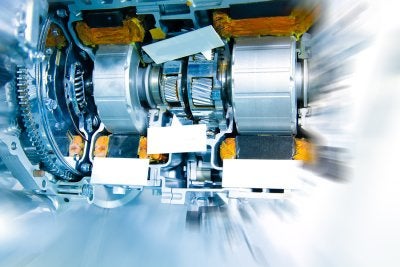
You are pressing harder on the accelerator.
As you get to know your car’s typical performance dynamics, you will be able to figure out how much pressure is required on the accelerator to achieve certain speeds. If you feel like you are flooring the accelerator pedal, but your car’s engine is failing to respond, you may be facing a fuel line issue.
Your tailpipe is emitting strange smoke.
Many engine problems can be diagnosed by examining the type of smoke that is coming out of the exhaust system. Depending on the source of your engine problems, you may notice black or blue smoke billowing out of your tailpipe. When your tailpipe emits black smoke, this problem may be accompanied by an engine backfire. At the first sign of strange smoke coming from your engine, make an appointment at the auto repair center right away.
Your engine idles more roughly than usual.
A fully powered engine that is in good mechanical shape should be smooth and quiet as it is idling. Extremely rough idling could indicate a problem in your spark plugs, cylinders, or fuel filters. No matter the source of your rough idle, any unusual engine sensations are good indicators that your engine is starting to lose power. A qualified mechanic can repair the problem and restore your engine to full functionality.
-
Getting to Know Your Ignition System
As drivers, we may be tempted to take our ignition systems for granted. In this video, you will review the basics of how ignition systems work. Whenever you turn the key in your ignition, a signal is sent to your battery. As the battery is switched on, it will activate your engine, transmission, and other critical vehicle components. If you are experiencing ignition problems, an auto mechanic in Sacramento can repair the issue.
When you drive a luxurious German auto, you should treat your vehicle with the utmost care. A shop that specializes in German automotive repair services will offer the specialized services and certified parts that are needed to fix your European vehicle.
-
My Tailpipe is Smoking. What’s Next?
The exhaust that comes out of your car’s tailpipe can provide you with important information about what is going on with your car’s internal systems. If you start to see smoke billowing out of your tailpipe, this is a sign that your car needs immediate auto repair. A shop that offers radiator repair and other car repairs in Sacramento will have the diagnostic tools that are needed to figure out the source of your car’s worrisome smoke. Let’s take a look at what your tailpipe smoke may be telling you.
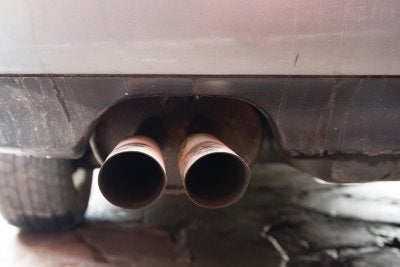
Blue Smoke
In certain instances, the smoke that is coming out of your tailpipe may take on a blue hue. When your tailpipe is releasing plumes of blue smoke, the origin of the problem may lie in your vehicle’s motor oil sealing system. When oil leaks from your car’s internal seals, it will burn up as it spills onto your engine. The resulting smoke is usually bright blue in color. To remedy the problem, you may need to schedule a seal repair appointment with your mechanic.
White Smoke
While white smoke may be less worrisome than black or blue smoke, any type of smoke coming from your tailpipe can indicate a mechanical issue in your vehicle. If water or antifreeze have cross-contaminated your car’s fuel lines, your car may start to emit large clouds of white smoke. To prevent your car from overheating, you will want to refill your coolant reservoir and bring your car to an auto repair center.
Light Gray Smoke
Automatic transmission failure can be another source of smoke in your tailpipe. If your automatic transmission system is leaking fluid into your engine, the fluid will start to burn and create light gray smoke. To diagnose a transmission fluid leak at home, you can start by checking your transmission dipstick for signs of low or burnt fluid. A professional auto repair appointment will be necessary to remedy your transmission fluid problem.
-
Harmonic Balancer Separation 101
The harmonic balancer is one of the most crucial parts of your vehicle’s crankshaft. As your engine turns, the harmonic balancer absorbs its vibrations and provides you with a smoother and more enjoyable ride. If your harmonic balancer is damaged or broken, you will need to make an appointment for car repair in Sacramento. A German auto repair facility will have the tools needed to get your harmonic balancer up and running properly.
One of the most serious issues that can occur in a harmonic balancer is when the unit separates from the engine belts. When your harmonic balancer separates, it is in danger of falling out of the crankshaft. To prevent catastrophic damage to your engine, you will need to schedule an immediate appointment at your auto shop . Using special tools, your mechanic will be able to rejoin the harmonic balancer to the belts and restore your car’s crankshaft to proper function.
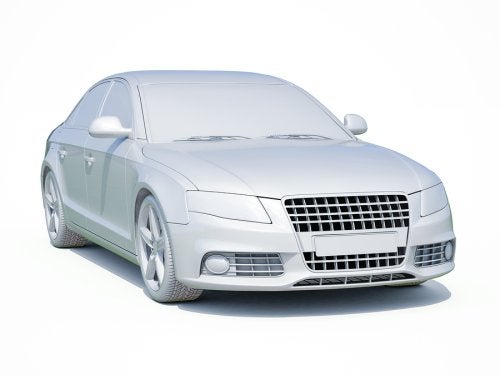
-
Common Causes of Battery Drain
Without a working battery, your car will refuse to start. Along with causing starting issues, low battery power can lead to troubles in the many electrical systems of your vehicle. An auto shop that offers Mercedes service in Sacramento can get to the bottom of your battery life problems. After you have received battery repair services from your local auto shop, you will want to be on the lookout for signs that your battery is being drained prematurely. Let’s review three of the most common causes of battery drain in today’s vehicles.
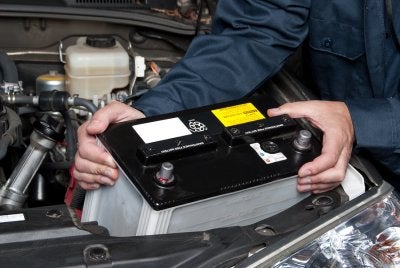
Illuminated Lights
Most drivers accidentally leave the lights on in their cars at one point or another. Even if your car is equipped with a system that turns off your headlights automatically, your interior lights or trunk lights can also be left on overnight. By leaving your lights on for several hours, you may wind up with a completely drained battery by the time you go to start up your car. To prevent your battery from dying, always remember to shut off all of your car’s lights before you head into your house for the night.
Electrical Problems
Certain electrical components, such as your radio and alarm systems, need to be supplied with a small amount of electricity at all times. However, if any of these systems are experiencing electrical problems, they may start to drain your battery excessively. A certified mechanic can troubleshoot your vehicle’s electrical systems and determine whether they are creating a parasitic drain on your battery.
Alternator Issues
In order for your battery to recharge with power, it must be supplied with fresh charge from your car’s alternator. If your alternator is experiencing troubles, however, the diode may not be able to deliver enough current to recharge your battery. When you notice the signs and symptoms of alternator issues, such as flickering headlights, do not hesitate to schedule a diagnostic appointment with your mechanic. By repairing your alternator, you will be able to safeguard your battery against excessive drain.
-
How Your Mercedes-Benz Mechanic Will Change Your Headlight Bulb
Your Mercedes-Benz is equipped with sophisticated components that should always be replaced by a car repair professional. This video from Car and Driver Magazine will show you how your Mercedes service mechanic will change your car’s headlight bulb. After removing the housing, your mechanic will carefully insert the new headlight into place. An auto shop in Sacramento will have the special replacement parts that are needed for use in your luxury Mercedes-Benz vehicle.
If your headlight or taillight has recently gone out, now is the time to schedule car repair services. Your mechanic can quickly replace your broken bulb and restore your car to safe driving condition in no time.
-
Why is it Important to Keep Up with Tire Maintenance?
Tires are the only contact point we have with the road, as they are the key to propelling and stopping your car. We rely on that small patch of rubber that is at each of the four corners of the car, to keep us on the road. It is important that we make sure that they are the proper tires, inflated, in good condition, wearing properly, and not too old.
Proper Tire
Car manufacturers choose specific tires to be fitted on their cars. They take into consideration what the vehicle was built for, its maximum performance, and weight loads. After determining these factors, they choose a tire that best fits the car’s needs. It is important to have these same considerations when we replace our tires. Choosing the wrong tire can have severe consequences. In the 1990’s, there were many cases where the manufacturer made the wrong tire choice leading to people losing their lives. It is crucial to go to a tire professional to help pick the right tires for your vehicle.
Proper Tire Inflation
Tire inflation is important for three reasons, handling, comfort, and fuel efficiency. Automotive manufactures have recommended tire inflation posted for your vehicle. The recommendations are based on the optimal pressure for two reasons. The higher the tire pressure, there is less rolling resistance, higher fuel efficiency, a rougher ride, and less traction. On the other hand, the lower the pressure, the better the traction, smoother ride, but there is poor fuel economy, and poor wear. They believe there should be a balance of good fuel economy, smooth ride, and ideal handling. Manufacturers usually put a sticker with pressures near VIN. label at B pillar or on the fuel door. There is a choice for a fully loaded or partially loaded car. Choose the inflation that best suits your needs.
Good Condition and Tracking Properly
To keep up with your tire’s wear, look for four things. Look for how deep is the thread, your vehicle’s alignment, tire balance, and damage.
Thread is what the tire manufactures use to move water from under your tire. Without it a tire would hydroplane and slide all over the road. Minimum thread depth on a standard road car is 3/32 of an inch. That is the minimum depth you want to see anywhere on the tire. One part of the tire may show considerably more, but it could be down to the steel belts elsewhere. It is important when checking a tire, you check the full width of the tire. The easiest way to measure the full width is to use a penny. Take a penny place it on edge with Lincoln’s head pointing in towards the tire. If the top of President Lincoln’s head is visible, then your tire is worn. All four tires should be examined and make sure to sample the complete circumference of the tire. Uneven tread wear is usually a sign of an alignment problem. Alignment is how we keep your vehicle tracking straight. If a tire is worn more on the inside or outside edge, it could mean your alignment is out of adjustment. Sports cars tend to have aggressive alignments and excessive wear in one part of the tire is to be expected. Sports car manufactures use alignment to allow their cars to handle better at higher speeds and side loads. The compromise of this is premature tire wear, usually on the inside edge. You may see a near perfect outer thread pattern and a severely worn inner one. Therefore, it is important to always check the full width of the tires.
If a tire is not properly balanced, the result will be a vibration that can be felt through the car or steering. Usually it’s a 5 mph range that you feel the vibration (e.g. 65 mph to 70 mph). This is commonly mistaken as an alignment problem. If not properly addressed, this can lead to scalloping of the tread and noisy tires.
Make it a semi-regular practice to check your tires for damage. Damage can come in the form of punctures (nails, screws, glass, rocks, etc.), sidewall damage from curbs, or bubbles. Bubbles occur when your tire begins to delaminate. Your tires are constructed of numerous plies of rubber and steel wire. Delamination is usually caused by an impact such potholes, running over bumps, or objects in the road, that causes the belts of the tire to tear, or age (which we will discuss in greater detail in the next section). At that point, the belts are compromised and can no longer hold its shape. An air pocket will form between belts and rubber tread, which may also be felt as a vibration.
Tire Age: How Old is too Old?
Two frequently asked questions, are how can you tell how old a tire is and what’s wrong with an old tire. Tires have “Born On Dates” which are production dates. They usually appear in an oval on the sidewall and consist of 4 numbers such as 1508. The first pair of numbers is the week in which the tire was made and the second pair is the year. For the number 1508 stands for the 15th week of 2008 or April 7-13, 2008. When buying new tires, it is a good idea to find out what is the production date of the tires you are buying, so you have a record of when your tires were produced. Tire manufactures and vehicle manufactures opinions vary on how old is too old. Six to eight years is a good timeframe to consider replacing your tires, despite how much tread is left on them. Contributing factors of tires aging are heat and humidity. As they age, tires will begin to break down and delaminate. Inspect your tires to see if you can see cracks in the sidewall, check the born on date, and most importantly, have a tire professional inspect your tires, and follow their recommendations.
Importance of Tire Maintenance.
Tire maintenance is important on many levels, as it is the only contact the vehicle has with the road. Efficiency and proper inflation can increase your fuel mileage. It is economically efficient to make sure your tires are properly inflated, balanced, and suspension aligned can extend the life of your tire. Most importantly if there is ever a question about your tires, ask a qualified tire expert to help you make the proper decisions. So much is riding on four little rubber contact patches and you should make the right choices.
RECENT POSTS
categories
- Uncategorized
- Automotive
- automotive diagnostics services
- Frank’s Automotive
- auto shop
- oil change
- Auto mechanic
- Maintenance
- maintenance schedule
- Catalytic Converter
- Engine Light
- oxygen sensor
- Transmission Problems
- BMW
- Pre-Purchase
- Brakes
- Anti-Lock Brakes
- Auto Diagnostics
- Alternator Repair
- Slipping Transmission
- Engine Trouble
- Brake Sounds
- Frank’s Automotive
- Frank Lettini
Archives
2022
2020
2019
2017
2016
- December (4)
- November (5)
- October (4)
- September (4)
- August (4)
- July (4)
- June (4)
- May (4)
- April (4)
- March (4)
- February (4)
